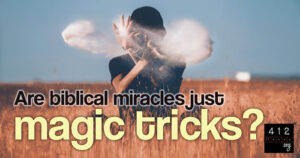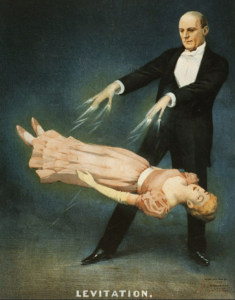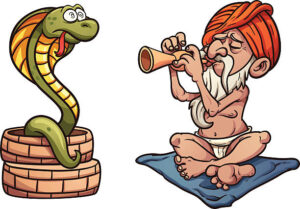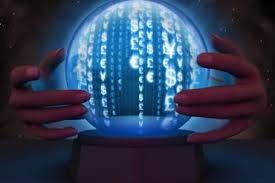Raboyseyee and Ladies,
What to do when one is invited to three weddings all going on at the same time in different locations, none close to another? We would gladly have attended all three. Alas, we sadly missed two of them; family goes first.
We begin with big mazel tov wishes to Racheli Miller, daughter of the Ois’s niece Esther Miller upon her wedding this past Tuesday evening to Sruly Brach, he the son of Tuli and Fannie Brach, they of Miami Beach. The Ois was honored with a brocho under the chuppah. Mazel tov to the Ois’s older sister Mina Bartfeld and to the entire extended Bartfeld, Miller and Brach families. May Racheli and Sruly merit to enjoy peace and harmony in their home for many decades to come.
Mazel tov to longtime friends of many decades, Yohana and Robbie Herskowitz, upon the wedding of their daughter Sophie to Avi Walfish, son of Dr. Ari and Alysson Walfish. We have known beautiful Sophie since birth and are delighted for her and Avi. Mazel tov as well to Yohana’s parents, Mr. and Mrs. Joseph and Lieve Guttmann, to Robbie’s mom, Mrs. Judy Herskowitz and to the entire extended Guttmann, Herskowitz and Walfish families. May Sophie and Avi always enjoy marital bliss.
—————————————————————————————
Juggling Things on the Organ & Crystal Balls
According to kimat all sources, crystal balls are spheres of leaded glass or transparent stone, usually about the size of a grapefruit, used for “scrying” or seeing the unseen. Crystallomancy (the art of using crystal balls for scrying) allows the seer to uncover mysteries and secrets, peer into the future, communicate with angels, or, in some cases, communicate with the dead. There is no evidence that crystallomancy has any scientific validity, but it has nevertheless been popular for millennia in civilizations around the world. In fact, the heylige Gemora (Sanhedrin 65b) and elsewhere, discusses magic, sorcery, necromancy and more; the stories told are givaldig! So happens that people all over the world love seeing magic.
More: According to informed sources (the internet), in 2021, the magic franchise had an estimated value of 1.64 billion U.S. dollars, almost double the value of the franchise five years ago. This includes witches and wizards, magic spells and potions, demons and spirits. The occult and forces of magic are a source of fascination for many people. Folktales and legends regaling magical characters continue to enjoy strong popularity. Most authorities -to include Jewish sources- maintain that witchcraft constitutes a serious force – one that must be reckoned with. What is the allure of these magical forces? And why is the occult so forcefully rejected by the heylige Toirah?
Let us begin here: The RBSO -as we come to learn in the heylige Toirah absolutely abhors magic in every form, and this week -in our parsha- He delineates various forms He wants the Yiddin to stay away from. How many forms are there? Just what does ‘stay away from’ mean? Why is the RBSO a magic hater? Is magic even real? Are we permitted to see magic shows? May we perform card and other tricks? Can Jewish people perform magic to make a living? Was Harry Houdini (born Erik Weisz) a nice Jewish boy? He was! And while the heylige Ois is not equipped with all the answers, this week’s parsha does discuss various forms of prohibited magic and wait until you read how Rashi and others described or interpreted the RBSO’s specific wording. Among the 41 mitzvis given over this week, one deals with magic and the RBSO dedicated two pisukim to its various forms He wants the Yiddin to abstain from. More on that soon.

Just last week, a reader -who shall remain nameless for today- wrote and asked this question: “where’s the sex?” Nu, those who have been reading me from the get-go -we just started year 13- and even newcomers, know this: the heylige Ois shares what the heylige Gemora, the medrish and other sources provide, especially so when they add color to a pshat. The Ois does not force the issue. That being said, if I told you that Rashi -in our parsha- (18:11:4) says the following, would you believe me?
Iודרש אל המתים (OR A NECROMANCER) – “as, for instance, one who raises a corpse, placing it on his genitals, or who consults a skull (Sifrei Devorim 172:4; cf. Sanhedrin 65b).” Did we read that correctly? The guy does what? How does one place a corpse on his genitals? And why would one do that? Just the thought of it sounds crushing. And let’s check this out from the Sifsei Chachomim, (Devorim 18:11:1) who provide this definition: “Someone who conjures up [the dead] onto his male organ; i.e. he conjures up the dead onto his male organ and it speaks there.” And that’s what I call magic! Ober, what are we reading here? Exactly how that works, ver veyst? Exactly what the dead person is doing on the male organ, also ver veyst, and exactly what all this is meant to teach us, yet another ver veyst? The bottom line: our sages -chapped that the male organ could raise up some magic; not much has changed. Perhaps the genitals are used for leverage, ver veyst?
 Hey, don’t blame the Ois; I’m only quoting and working with what Rashi gave. What is going on here? What is Rashi and the Sifsei Chachomim talking about? What’s happening here? What is the male organ and genitalia doing in our parsha? Why does the RBSO hate magic? Doesn’t everyone enjoy watching magic being performed? But wait: there is more and let’s see how our sages interpreted the nine different mediums mentioned in two pisukim, all seemingly used in some form to create some magic. Nine? Shoin, let’s stop conjuring up images of dead people levitating, and let us now read the instruction’s Moishe gives the Yiddin in our parsha. Says the heylige Toirah (Devorim 18: 9- 13), azoy:
Hey, don’t blame the Ois; I’m only quoting and working with what Rashi gave. What is going on here? What is Rashi and the Sifsei Chachomim talking about? What’s happening here? What is the male organ and genitalia doing in our parsha? Why does the RBSO hate magic? Doesn’t everyone enjoy watching magic being performed? But wait: there is more and let’s see how our sages interpreted the nine different mediums mentioned in two pisukim, all seemingly used in some form to create some magic. Nine? Shoin, let’s stop conjuring up images of dead people levitating, and let us now read the instruction’s Moishe gives the Yiddin in our parsha. Says the heylige Toirah (Devorim 18: 9- 13), azoy:
| 9. When you have come to the land the Lord, your G-d, is giving you, you shall not learn to do like the abominations of those nations. | טכִּ֤י אַתָּה֙ בָּ֣א אֶל־הָאָ֔רֶץ אֲשֶׁר־יְהֹוָ֥ה אֱלֹהֶ֖יךָ נֹתֵ֣ן לָ֑ךְ לֹֽא־תִלְמַ֣ד לַֽעֲשׂ֔וֹת כְּתֽוֹעֲבֹ֖ת הַגּוֹיִ֥ם הָהֵֽם: | |
| 10. There shall not be found among you anyone who passes his son or daughter through fire, a soothsayer, a diviner of [auspicious] times, one who interprets omens, or a sorcerer, | ילֹֽא־יִמָּצֵ֣א בְךָ֔ מַֽעֲבִ֥יר בְּנֽוֹ־וּבִתּ֖וֹ בָּאֵ֑שׁ קֹסֵ֣ם קְסָמִ֔ים מְעוֹנֵ֥ן וּמְנַחֵ֖שׁ וּמְכַשֵּֽׁף: | |
| 11. or a charmer, a pithom sorcerer, a yido’a sorcerer, or a necromancer. | יאוְחֹבֵ֖ר חָ֑בֶר וְשֹׁאֵ֥ל אוֹב֙ וְיִדְּעֹנִ֔י וְדֹרֵ֖שׁ אֶל־הַמֵּתִֽים: | |
| 12. For whoever does these things is an abomination to the Lord, and because of these abominations, the Lord, your G-d is driving them out from before you. | יבכִּי־תֽוֹעֲבַ֥ת יְהֹוָ֖ה כָּל־עֹ֣שֵׂה אֵ֑לֶּה וּבִגְלַל֙ הַתּֽוֹעֵבֹ֣ת הָאֵ֔לֶּה יְהֹוָ֣ה אֱלֹהֶי֔ךָ מוֹרִ֥ישׁ אוֹתָ֖ם מִפָּנֶֽיךָ: | |
| 13. Be wholehearted with the Lord, your G-d. | יגתָּמִ֣ים תִּֽהְיֶ֔ה עִ֖ם יְהֹוָ֥ה אֱלֹהֶֽיךָ: |

Who are the “Ov” and “Yidoni” in posik 11? What does a “charmer” do? What’s his MO (modus operandi)? Says Rashi azoy: he uses charms to tame snakes and scorpions. The last three examples perform different flavors of séances. Chap all that? Want more? Rashi also says this: “a charmer” is one who collects snakes, scorpions or other creatures to one place. The “pithom sorcerer” is one who raises the [spirit of the] dead, and it speaks from his [the sorcerer’s] armpit. The “yido” sorcerer” is one who inserts a bone of the animal called yido’a into his mouth, and the bone speaks by means of sorcery and the “necromancer” (by way of example) is one who raises [the dead spirit] upon his membrum (his penis), or one who consults a skull. Has the Ois gone off the reservation? Not! Did Rashi -a vintner- drink too much of his own production before sharing these definitions? The bottom line: you can find Rashi’s comment in our parsha and in heylige Gemora (Sanhedrin 65b). And if that’s what Rashi thought, who are you -or I- to argue? How all this happens, ver veyst, but believe me that’s what the Gemora and others, tells us. Well, blow me down!
In case you’re wondering, here are a few other definitions of the words in the pisukim above. What is an “augur”? Says the Ibn Ezra that the term “augur” (koisem) is a general term, referring to any person “who issues decrees and declares things will undoubtedly be so.” The augur predicts the future in no uncertain terms. All others on the list are examples of augurs. How is an “augur” different from a “diviner” or a “charmer”? Says Rashi, that the augur, diviner and sorcerer all predict the future by using assorted methodologies that were popular three thousand years ago. The קסם קסמים is one that uses divination, ober what is a diviner? One who takes his stick in hand and says, (as though he were consulting it), “shall I go, or shall I not go?” The old stick in the hand trick! The bottom line: many continue -ad hayoim hazeh (to this day) to take their sticks in their hands, if you chap; rational decisions come later. And the Chizkuni? He states that the קוסם קסמים is “someone using divination to learn about future events.” As an aside, some commentators understand the term “walking cane” literally, but see it as a synonym for an idol made of wood. The idol would be asked and give some sign to the questioner. The bottom line: though some do taka treat their wood -if you chap- as idols, the heylige Toirah forbids all forms of witchcraft, practical magic, and engaging in the occult. His people- those seeking to know the future- may not consult with any of the above listed. Case closed!
Ober, efsher you’re wondering azoy: what’s taka wrong with asking and wanting to know what the future holds? Don’t many orthodox Toirah observant Jews run to rebbes and mikubolim (kabbalists) daily to ask questions? Don’t we all want assurance of a rosier future? And don’t we -at times, especially perilous ones- want their assurances to solve immediate problems? May one seek out their advice? Can they perform magic? And efsher you’re wondering why the RBSO -Creator of all, to include magic- would so abhor it and outlaw it completely? And the answer is seemingly azoy: the heylige Gemora (Kidushin 49b) tells us that “ten measures of witchcraft descended to the world; nine were taken by Egypt.” Efsher you recall learning how Paroy’s wizards sought to duplicate the divine miracles performed by Moishe while administering the Makos (Ten Plagues) that afflicted the idolatrous Mitzrim. In some instances, the sorcerers were mamish successful. Ultimately, they confessed that the supernatural phenomena were the “finger of G-d”. In other words: Egypt was a hotbed of witchcraft, and we Yiddin – the RBSO’s chosen people- are not to emulate their ways. Let us recall how the RBSO reminds us -over and again- that their ways were repugnant to Him and for those reasons they were spit of their land. We are not to emulate their ways.

Ober may we know the future? That depends on whom we ask and as it turns out, our sages were divided into two schools of thought. What else is new? Says Rashi that knowing the future is irrelevant either because a person should be satisfied with whatever the future brings, or because the Yiddin are not affected by divination. In this way, a person becomes “tomim” (wholehearted) with the RBSO. And taka, in case you missed posik 13 above, let’s read it again because that is precisely what the RBSO wants from us: “You shall be wholehearted (tomim) with G-d.”
Ober (however), says the Seforno, azoy: the Toirah is not against divination per se; it is only against using pagan methods of divination. If a person wants a peek into the future (or to know how the Mets and Yankees will fare, and if Aaron Judge might hit 62 or more home runs this season and beat the record held by Roger Maris since 1961), that person should go see a certified Jewish prophet. Are Jewish prophets certified? And listen to this: In his commentary on the heylige Gemora (Shabbis 75a), Rashi explains that one may study sorcery to be able to distinguish between a true prophet, who proffers a legitimate supernatural sign of his legitimacy, and a false one, who uses witchcraft to hoodwink a gullible public. And more good news: Toisfis (a commentator on the heylige Gemora) cites Hai Gaon, who said that one may study sorcery in order to distinguish between punishable actions in the realm of black magic and non-punishable endeavors or entertainments such as sleight-of-hand tricks. And more: Rabaynu Bachya cites the requirement that members of the Sanhedrin are to be well versed in all areas of knowledge, including witchcraft and the seventy world languages, in order for them to be able to render correct judgment on those matters without having to resort to extra-judicial assistance (Menochos 65a). Says Rashi that members of the Sanhedrin need to know sorcery in case a defendant condemned to be burned attempts to use the dark arts to prevent the fire from harming him. The judges would then be able to counter with sorcery of their own, thereby causing the execution of the malefactor by any means necessary. Gishmak!
 Ober asks the Ois azoy: is magic even real? Is all we read in Harry Potter even possible? Is biting off and chewing the pitim (stem) of the esrog a real segulah (charm) to curing infertility and ensure a safe pregnancy and delivery? Ver veyst, but at least a handful of orthodox soothsayers and mikubolim so believe. Is that magic? Can paying an organization which pays a bunch of rabbis to go daven at the Kotel (Wailing Wall) over in Yirusholayim for whatever you need or wish for, bring magical results? (Answer: if your wishes come true, yes. If not, you’ve wasted your money!) The heylige Gemora is full of magical lore and seems equally conflicted about the supernatural. Our sages of the Talmudic-period forbid some magic as being the “ways of the Amorites,” one of the nations who inhabited the land before the Yiddin waged war and took over and moved in, but describe other magical acts with awe and even pride.
Ober asks the Ois azoy: is magic even real? Is all we read in Harry Potter even possible? Is biting off and chewing the pitim (stem) of the esrog a real segulah (charm) to curing infertility and ensure a safe pregnancy and delivery? Ver veyst, but at least a handful of orthodox soothsayers and mikubolim so believe. Is that magic? Can paying an organization which pays a bunch of rabbis to go daven at the Kotel (Wailing Wall) over in Yirusholayim for whatever you need or wish for, bring magical results? (Answer: if your wishes come true, yes. If not, you’ve wasted your money!) The heylige Gemora is full of magical lore and seems equally conflicted about the supernatural. Our sages of the Talmudic-period forbid some magic as being the “ways of the Amorites,” one of the nations who inhabited the land before the Yiddin waged war and took over and moved in, but describe other magical acts with awe and even pride.
In one story, the sage Rabbi Eliezer gains prestige when his deep knowledge of the heylige Toirah endows him with supernatural powers that enable him to prevent a house from collapsing. In another, a pair of 3rd-century rabbis are celebrated for using a spell to create cows on a Friday afternoon, just in time for a sumptuous Shabbis dinner featuring roast beef. But when another rabbi uses the same words to manufacture a humanoid golem, his rabbinical colleague turns it to dust because it cannot speak and therefore must be “a [dangerous] creature of the magicians.” Raboyseyee, these fanciful stories are but a teaser; the heylige Gemora contains so many more.
And the bottom lines? Says the RambaM (on the pisukim referenced way above and in his Mishne Toirah, laws of idolatry 11:16) that magic does not work. There is nothing to it and fartig. “All the above matters are falsehood and lies with which the original idolaters deceived the gentile nations in order to lead them after a false god. It is not fitting for the Jews who are wise sages to be drawn into such emptiness, nor to consider that they have any value . . . Whoever believes in [occult arts] of this nature and, in his heart, thinks that they are true and words of wisdom, but are forbidden by the Torah, is foolish and feeble-minded . . . The masters of wisdom and those of perfect knowledge know with clear proof that all these crafts which the Torah forbade are not reflections of wisdom, but rather, emptiness and vanity which attracted the feeble-minded and caused them to abandon all the paths of truth. For these reasons, when the Torah warned against all these empty matters, it advised: “Be of perfect faith with G-d, your Lord.” The RambaM’s position is rather clear.
Ober says the RambaN (who seemingly almost always argued with the RambaM), azoy: magic was forbidden by the RBSO davka because it works! It’s real! “And now, know and understand regarding magic, that the Creator (may He be blessed) created everything from nothing and made the upper realms the guides of what is beneath them; and He placed the power of the earth and all that is in it in the stars and constellations according to their motion and direction, as has been demonstrated in the science of astrology . . . However, it was one of His great wonders that He placed within the upper realms alternate ways and forces by which one might change the governance of the realms beneath them . . . But it is the regular governance of the constellations that the Creator (blessed is He) desires, which He placed in them to begin with, and this would be the opposite. This is the secret of magic and its power, such that the rabbis said regarding magical practices that they “contradict the Council Above”; in other words, they subvert the simple forces of nature, which is a contradiction to the upper realms to some extent. Therefore, it is proper that the Torah prohibit them so that the world will be left to its normal function and its natural state, which is the desire of the Creator.”
Got all that? RambaM says magic is not real; RambaN says farkert. Veyter. What’s taka the difference between religion and magic? How can we distinguish a prayer from a spell, or superstition from religious ritual? Is the ayin horo (evil eye) real? Are sheidim (demons or malevolent spirits) real? Do amulets work? And the list goes on. Isn’t it emes that religion and magic often converge? How do we distinguish between the prophet or the rabbi, the chusid (as in Chasidim) or the sorcerer, miracle or magic and prayer or incantation? How do we draw a line between magic and Jewish ritual or halocho? I’m getting a headache and could use a magic pill as I write these words. Isn’t it emes that magic is not essentially different from the ‘normal’ Jewish religious view that ascribes actual power to sacrifice, prayer, ritual and observance of law?” Magic, which calls on unseen forces, also does not differ from common Jewish views of the involvement of the RBSO —and angels and demons—in day-to-day life. As the Ois said at the outset, he has many questions but does not have, and has not found, very good answers. Can magic be real and not at the same time? And wouldn’t that also be magical?

It does epes appear that our sages of the heylige Gemora were not concerned with magical actions per se, but rather with the character and intentions of the person performing the act. Whether an unusual event is a miracle (and therefore praiseworthy) or magical (and thus deplorable) depends on who does it and for what purpose. The heylige Gemora is replete with many dozens of stories containing magic. When the magic brings one closer to the RBSO, it’s seemingly OK and does not fall into the basket of the nine forbidden by the RBSO in our parsha. In other words: if magic is performed by those with bad intentions, they and their bag of magic tricks are bad and forbidden. When Bilham, who according to the medrish was flying around -in Harry Potter style- trying to avoid death at Moishe’s hands, it was sorcery. Ober when Moishe’s staff turned into a serpent, it’s called magic. It also appears that magic performed by a sage, rabbi, or even a mikubil (even when paid handsomely), is still seemingly ok. Magic performed under the guise of ritual is kosher, but, is it real or not? Says Rabbi YY Rubinstein azoy: if the heylige Toirah prohibits magic, it must be that magic works. Otherwise, we’d soon realize it was all nonsense and we’d throw away our crystal balls. Seemingly, the RBSO forbade magic –not because it is ineffective but because in some ways, those with bad intentions, somehow diminish the sovereignty of the RBSO.
And the Ois’s final bottom lines for the week? If magic is real, the RBSO either invented it, or allowed for it to exist -or coexist- in this world. If He decided to ban the specific forms of magic in the parsha, that’s just His prerogative and fartig; case closed. The RBSO considered the magic performed by the nations inhabiting the land before the Yiddin took possession, an abomination. In posik 13, the RBSO tells says azoy: “For whoever does these things is an abomination to Hashem, and because of these abominations Hashem is driving them out from before you.” Ober, for those who must know the future, the RBSO also provided the fix in pisukim 14 and 15 of the same chapter: “These nations which you are to possess listen to diviners of [auspicious] times and soothsayers, but as for you, Hashem has not given you [things] like these. [Instead] a prophet from among you, from your brothers, like me, Hashem will send you – listen to him!” That was then. Today, we no longer have prophets and shoin, unsuspecting Yiddin continue to run to people they believe to have magical powers. And the difference between magic and miracles is this: The RBSO makes miracles and people -some- perform magical acts.
A gittin Shabbis-
The Heylige Oisvorfer Ruv
Yitz Grossman
